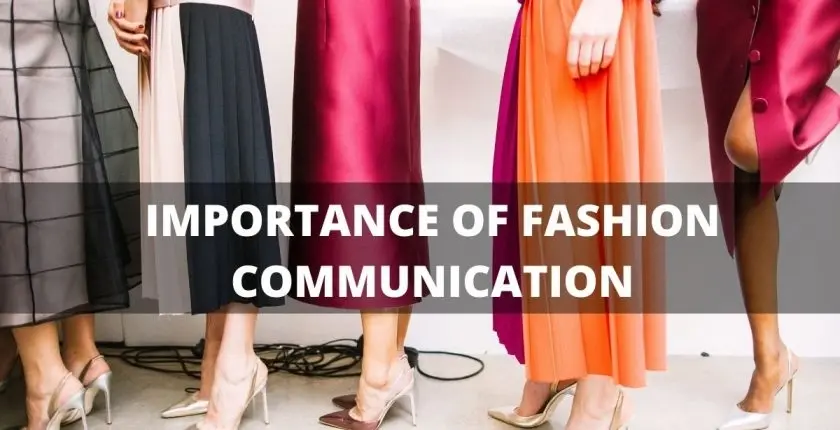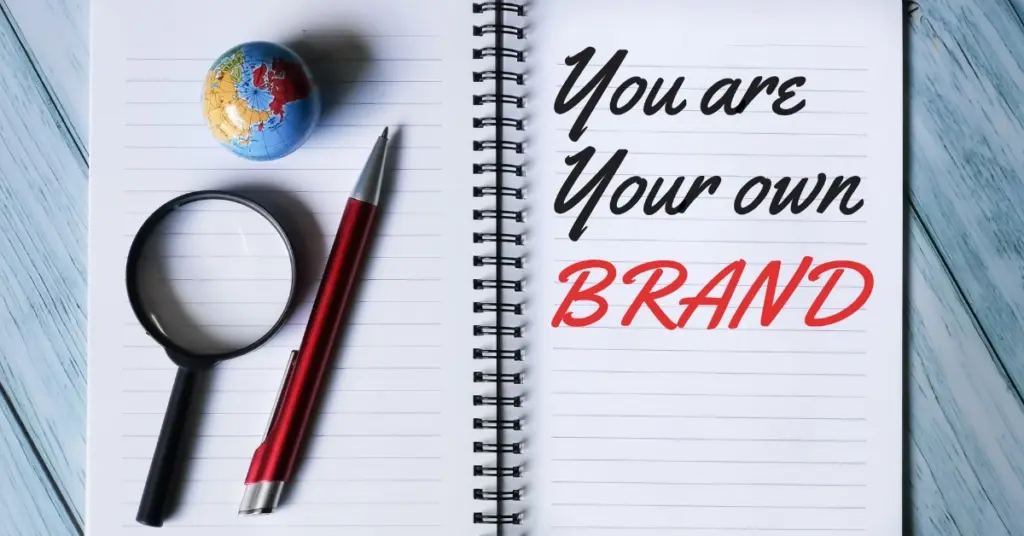The Art and Science of Fashion Communication: A Student’s Guide to Mastering the Craft
- General
The Art and Science of Fashion Communication: A Student’s Guide to Mastering the Craft
Contact us
Bengaluru
Campus 1 : JD School of Design, No. 18-1, Brigade Road, Bengaluru,Karnataka – 560 001.
Campus 2 : No. 40, Swan House, 4th Cross, Residency Road, Bengaluru, Karnataka – 560001.
Goa
Musthtifund Saunstha , Near Mahalaxmi Temple,Dada Vaidya Road, Goa-403001
Introduction
Since the fashion industry is very dynamic and highly competitive, knowing the expectations of customers and having effective communication strategies is not only a requirement but, more importantly, a weapon. Fashion communication includes a means by which messages, stories, and pictures are communicated and through which brands and consumers’ choices are experienced. For students in this dynamic field, developing technical know-how and skills in fashion communication is not just a task, but a gateway to empowerment. It’s about understanding the different aspects of fashion communication and providing guidance to those aspiring to become fashion communicators.

Understanding Fashion Communication
Fashion communication aspires to design and disseminate constructive messages using visible, audible, and written appeals to foster and maintain brand personality. It is a rather complex area of study that comprises aspects of fashion journalism and media, fashion media writing, and fashion marketing communication. Ultimately, it accomplishes its general objective of weaving a narrative that engages the audience.
In the realm of fashion brand communication, the strategic orientation towards the audience is not just important, it’s pivotal. Whether the target market responds to images, narratives, or arguments, effective communication can transform a brand and make it stand out in a crowded field. This strategic approach not only requires technical skills, but also a thoughtful understanding of the audience, making students feel strategic and thoughtful in their communication efforts.

Key Components of Fashion Communication
Visual Communication
Visuals are the heartbeat of fashion communication, whether they are the main focus or the subtle undertones. They span from photographs, videos, and illustrations to designs and styles. This medium is not just important, it’s inspiring. It captures the attention of the audience and conveys the aesthetic and emotional appeal of the brand, sparking creativity and imagination.
1.Importance of Visual Aesthetics: Sometimes, when we notice some styled attire, our concern lies in the external shield, but the essence of attractiveness is deeper. Getting a visual appeal to the masses is crucial in establishing a brand name and promoting awareness on the global platform. Luxury fashion brands such as Chanel, Gucci, and Versace have created a brand image that will appeal to people globally, which proves that it is more important for contemporary brands to convey their slogans and ideas through pictures.
2. Creating Compelling Visual Content: To make a lasting impression with your graphic content, it’s crucial to develop your personal style. This can be achieved through learning photography, design, and fashion styling and communication. Tools like Adobe Creative Suite and Canva are excellent for crafting stunning graphics. Experiment with different approaches to find a style and manner that truly reflects you.
3.Case Studies of Successful Visual Campaigns: Analyzing successful visual campaigns would clarify the situation. For instance, Gucci recently embarked on a campaign known as “Gucci Bloom,” in which they could incorporate bright images and narratives and inspire their consumers’ female criteria.

Verbal Communication
The other subcomponent of fashion communication is verbal communication, which uses words to pass information or stories. It refers to creating storylines that appeal to the target user group’s emotions.
1.The Power of Storytelling in Fashion Marketing: Stories are a potent tool in fashion marketing and communication, capable of shaping consumer behavior. They offer a platform to share brand visions, cultural influences, and reflections. A well-crafted story can transform a product into a cherished part of a client’s daily life, forging a deep connection with the audience.
2.The Art of Crafting Brand Narratives: All the strategies above are aimed at helping students improve their creative writing and build their capacity to construct art narratives. Effective practices include:
- I am creating relatable characters.
- I am invoking passion as a way of ‘hooking’ the viewers or listeners.
- I am using adjectives and other expressive means to describe emotions and to give them a higher value.
- Nike and Patagonia are two prime examples of brands that do well in this, meaning they use their brands’ narratives to solidify their beliefs about themselves.
3.The Influence of Verbal Communication: An important fact to note is that verbal communication that occurs through the use of words is the most influential. Nike said this with the famous slogan ‘Just Do It,’ which motivated millions to work harder to succeed. In the fashion industry, this shows how effectively the use of words can create powerful messages and strong brands.
Written Communication
Business writing in fashion encompasses a wide range of text formats, from blog entries and articles to social media posts and press releases. This versatility makes it a valuable skill for anyone interested in fashion journalism or communication within the fashion industry.
1.The Role of Written Content: Written content efficiently creates goals, a brand’s voice, and authority—its benefits. It is a simple way of passing on detailed information, sharing more about an issue or an idea, and even trying to get a response from the target group.
2.Techniques for Writing Captivating Fashion Copywriting: Writing good fashion copy is not an easy task. It calls for brilliance when writing, practicality, and good customer-base knowledge. Link-based incentivization approaches include employing appealing headlines, utilizing descriptive language, and preferring the use of conversational language.
3. Highlighting Successful Fashion Bloggers and Writers: Fashion bloggers such as Chiara Ferragni and Aimee Song are proof that well-written blog posts can leapfrog you to personal celebrity status. Their blogs capture fashion, style, personal taste, and professional advice on lifestyle that many people read.
Skills and Tools for Aspiring Fashion Communicators
This is why the approach to fashion communication courses needs to be versatile and require various elements in order for the students to better prepare for successfully competing in the fashion world. These comprise creativity, handling of information and knowledge, and proficiency in computers and other media platforms.
1.Essential Skills: Creativity is the lifeblood of fashion communication. Encouraging students to think innovatively and come up with unique ideas is crucial. Effective communication is also a key skill, as it enables the transmission of messages. Reasoning skills are essential for trend analysis and drawing logical conclusions.
2.Tools and Software: Proficiency in design software like Adobe Design, Graphic Design Studio such as Canva, and social media platforms is a must for content creation and sharing. Online fashion communication courses and workshops can effectively teach these tools, enhancing students’ digital skills. Platforms like Coursera, Udemy, and Skillshare offer a wide range of fashion communication courses.
3. Resources for Learning and Improvement: As has already been indicated, there are several resources that a student can use to advance their understanding as well as gain skills. Books or book chapters, research articles, academic papers, fashion blogs, and accounts of online tutorials are quite helpful and inspiring. Other sources of information may include the associate membership of different professional bodies such as the International Association of Professional Fashion Communicators (IAPFC) produced publications and other trade-related fairs and expos.

Building a Personal Brand in Fashion Communication
In any profession, especially fashion, the need to put a face to the business can always be emphasized. Personal promotion is also valid in students’ cases because it allows them to be noticed and reveal special skills.
1. Importance of Personal Branding: Fashion is made by personal branding within positioning and marketing concepts that have been seen regarding the personality of one’s character. This is about being ‘heard’ in the marketplace, telling your story about who you are and what you want to become.
2. Steps to Develop and Maintain a Unique Personal Brand: There are several steps one has to take to create a personal brand. Firstly, target your product or service by determining the field you are interested in and the consumers who would most likely buy it. Build a set of works that helps to determine the necessary qualifications. People share their content and even interact with their target market as part of social media. Believe in consistency – ensure your brand image is consistent throughout every material form.
3. Utilizing Social Media and Online Portfolios: Some platforms famous for creating personal brands include Instagram, Twitter, and LinkedIn. Use them to post your projects, meet and network with other designers, and monitor trends. An online portfolio on platforms such as Behance or a personal website is beneficial as it is a resume and demonstrates skill and success.
Challenges in Fashion Communication
Like any other form of communication, fashion communication has its unique set of challenges. These challenges, some of which are time-bound, others relevant today, include the constant need to stay current, meet deadlines, and create innovative solutions under pressure.
1. Common Challenges: Among these potential issues, perhaps the most formidable one is the need to constantly monitor fashion’s manufacturing trends. The industry changes as time progresses, and what is considered acceptable or appropriate today may be considered taboo tomorrow. Another that comes with civil engineering is working on projects that sometimes require working on numerous projects with strict deadlines while maintaining quality.
2. Strategies to overcome: These challenges include staying updated through fashion blogs, attending events, and networking with professionals. Prioritization and work organization are key to effective multitasking. Sustaining creative ability involves seeking inspiration from various sources and experimenting with new ideas.
3. Staying updated is crucial in fashion communication: The field is dynamic, and professionals need to keep pace with changing trends, advanced technologies, and evolving consumer needs. Continuous learning, through professional newsletters, webinars, and higher classes, is highly encouraged to ensure skills remain relevant.
Career Opportunities in Fashion Communication
Today, the field of fashion communication is not just a promising direction, but also a field with a high demand for professionals. Whether it’s in public relations, marketing, content development and management, or other related professions, there are numerous career tracks for students to choose from.
- Overview of Career Paths: Fashion communication is a rich and broad field, and miscellaneous career opportunities exist. PR is responsible for the overall handling of a brand image or a particular media outlet. Marketing professionals are tasked with establishing ways to reach the market and market various products and services. Writers, artists, and informational and mass communicators develop and present both textual and non-textual content to capture the individual or group’s attention. Brand managers are responsible for ensuring that a particular brand portrays the right image and how it would achieve this goal.
- Skills and Qualifications Required: Some jobs involve specific abilities and positions, while others involve other capabilities and positions. Public relations involves excellent interpersonal communication skills and effective management of relations. As such, the job requires analytical skills coupled with adequate knowledge and understanding of consumer behaviors. Specialist audiences require content creators to have creative skills and the ability to use different media effectively. Crisis management skills and the ability of brand managers to think and lead are essential.
- Tips for Networking and Finding Job Opportunities: In the fashion industry, networking is not just a suggestion; it’s a necessity. Students should actively participate in shows, conferences, and conventions, join relevant organizations, and connect with professionals on LinkedIn. Real-world experience and contacts can significantly enhance a student’s education and training, which can be gained through internships or volunteering. Job search platforms like FashionJobs, The Business of Fashion, and LinkedIn can be valuable resources for finding fashion communication job vacancies.
In fashion, students who seek to build a good experience in fashion successfully should learn the art of fashion communication. Literally and figuratively, successful communication, whether visual, oral, or even written, can take a brand to great heights and foster a long-term relationship with its public. Through adequate skill acquisition, appropriate instruments, and constant awareness of current trends, students become all set for body fashion communication careers.
Final Thoughts
Looking at the challenges the fashion market faces, communication in this industry is an ever-shifting topic. Therefore, as we enter a new media environment, all means brands interact with the audience will change due to the interactive new technologies and platforms. Nonetheless, it is necessary to underline that fashion communication will always adhere to creative, authentic, and engaging strategies as its fundamental premises. As for young people who have chosen this tremendous field, there are only opportunities waiting for you in the future. Just relax, be curious, and follow your chosen path, as the world of fashion is vast and full of opportunities.
As we conclude, fashion communication is not just an industry, but a realm of endless possibilities for talented and ambitious individuals. If your heart beats for fashion media and communication, fashion journalism, or even fashion marketing and communication, then this rapidly expanding business is your place. Your journey in this industry is not just about achieving a successful career, but also about the continuous development of your talent, the establishment of your unique identity, and the exciting challenge of keeping up with the ever-changing trends in fashion communication. The future is bright, and it’s waiting for you.
- Let us begin by answering the fundamental question: What is fashion communication?
Fashion communication mainly depends on creating messages in pictures, words, and narratives to appeal to and alter a target population. This is important because such images make brands distinctive in a competitive market and easily recognizable due to their relatable themes.
- If one wants to prepare for a career in fashion communication, what should one expect to learn?
Some specific competencies entail idea generation, verbal and written communication, computer skills regarding graphic designing tools such as Adobe Creative Suite, and the range of the customer audience. These skills help create engaging visuals and texts to communicate the desired purpose or goal on the website.
- What strategies might one employ to build a distinct personal brand in fashion communication?
If you would like to have a personal brand, you should major in specifying your area of specialization, share relevant and interesting content on social media platforms such as Instagram and LinkedIn, and create a portfolio page where you showcase your work and your accomplishments.
- What are the general avenues one can take within fashion communication?
Some careers are public relations specialist, fashion marketer, content producer, fashion journalist, and brand manager. Interpersonal communication is helpful in both positions, while creative writing and strategic thinking are used in the Writing section.
- What can future fashion communicators do to keep track of the latest trends?
It is essential to stay informed about the latest trends. This can be done by subscribing to fashion blogs, attending fashion fairs and tradeshows, creating professional connections, and enrolling in fashion-related classes and lectures. This means that even after you have started practicing the course, you need to continually learn and refresh your skills.
